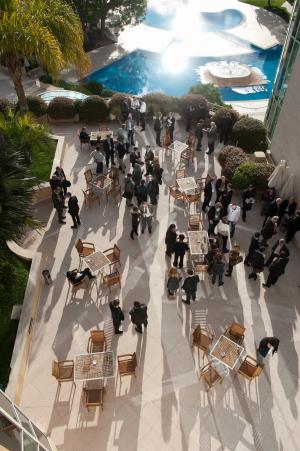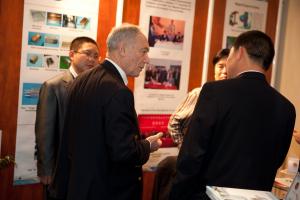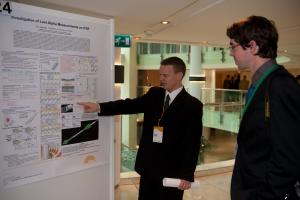The first edition of the
Monaco ITER International Fusion Energy Days, which was organized in the Principality from 23 to 25 November, provided a comprehensive view of what is at stake today in the world of energy and a clear perspective on how fusion and ITER can help to meet the challenges of the coming decades.
After hearing the
opening address by Prince Albert II, participants were given a rare opportunity to understand how these challenges were addressed by each of the ITER Members. Day one of MIIFED offered a fascinating world tour of initiatives, strategies and engagements aimed at meeting an ever growing energy demand.
The second day of the MIIFED event allowed the ITER Organization to present the new ITER Baseline to an audience of industry representatives and scientific and technical experts. In addition, to provide the industry representatives with the framework in which they could do business with the ITER Project, ITER Organization staff and representatives from the Domerstic Agencies presented the scope of, and modalities for, procurement of ITER components and services.
In the opening this session, which was chaired by Academician Evgeny Velikhov, Chair of the ITER Council, ITER Director-General Osamu Motojima presented the context and need for fusion energy development, and explained some of the scientific challenges associated with confining a burning plasma in ITER.
The focal points of the Director-General's presentation, however, were the ITER Baseline, particularly the key cost and schedule aspects, and his proposals for the reorganization of the ITER management structure, ongoing efforts on cost containment and the progress made in advancing construction of ITER. The Director-General also emphasized his commitment to meeting the expectations of the ITER Members to make the ITER Project successful by adapting the ITER Organization to the needs of the construction phase to ensure that the schedule is maintained while the project costs are contained.
In view of the orientation of the Day-2 presentation towards the industry representatives participating in MIIFED, subsequent presentations by leading members of ITER staff dealt with the major technical challenges which we are addressing (and overcoming!) in constructing ITER.




